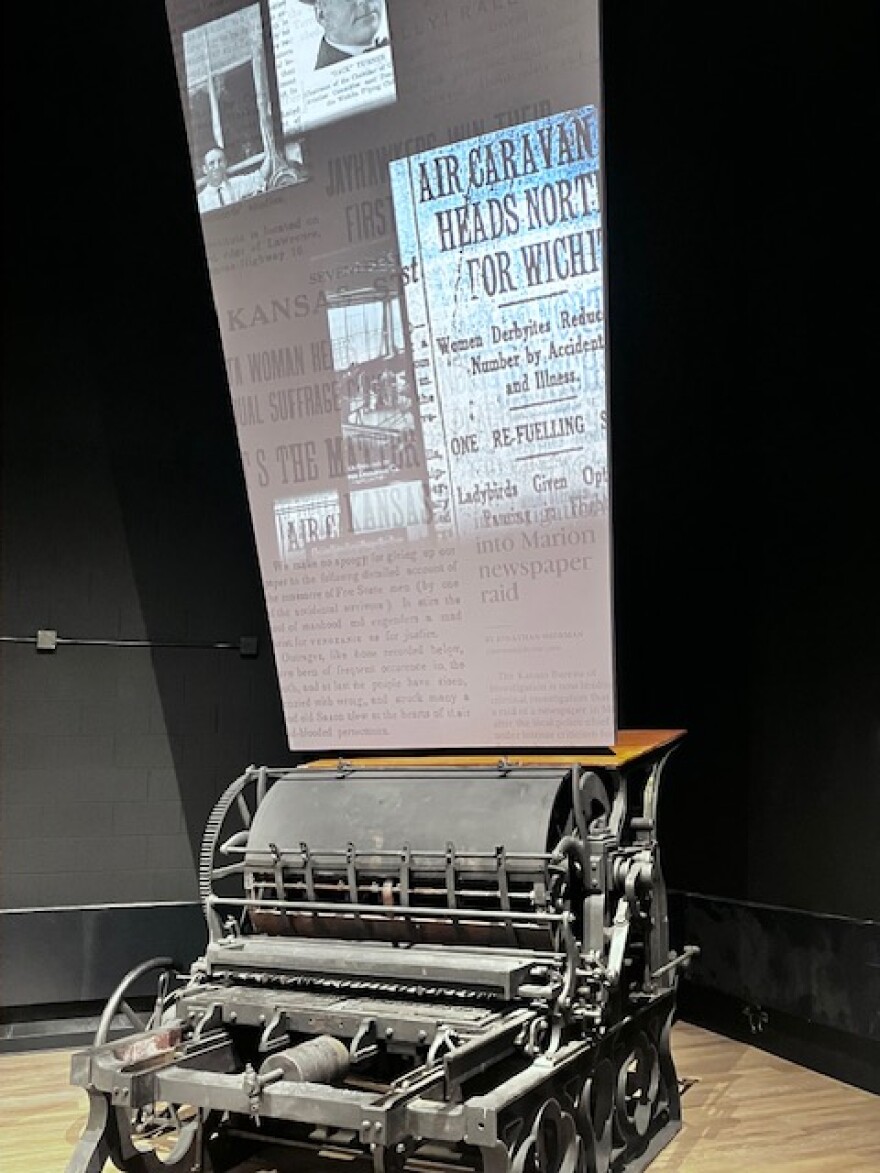It took more than three years and $6 million, but the renovation of the Kansas Museum of History is now finished. And the museum – located on the outskirts of Topeka – will reopen its doors Saturday. KPR’s Jim McLean has this preview.

TOPEKA, Kan. (KPR) – The day that Kansas history buffs have been patiently awaiting is finally at hand.
The Kansas Museum of History is reopening after closing in 2022 for a $6 million renovation.
The doors will open Saturday at 9:00 a.m. and admission will be free through the end of December.
Patrick Zollner, executive director of the Kansas Historical Society, said the decision to wave admission fees for the remainder of the year was made to thank Kansans for their patience during the closure and for dodging workers as they put the finishing touches on the renovation.
Sarah Bell, the museum’s director, says the renovation was long an expensive because the facility needed more than a facelift.
“We opened in 1984 and had done some updates along the way, but for the most part it was pretty much the same,” Bell said.
The old exhibits, she said, marched visitors through a chronological telling of Kansas history. From its geological transformation through its bloody founding as a free state in the run up to the Civil War and its subsequent role as a breeding ground for political and social activism. But the timeline pretty much stopped in the 1980s.
While the need for updating was obvious, Bell said museum officials saw an opportunity to do more. So, they decided to scrap the chronological approach in favor of one that used themes to connect storylines through time.
“There are a lot of benefits to a thematic structure,” Bell said.
In addition to being “much more dynamic,” she said it helps visitors more readily “see the relevance of history to today.”
The museum is organized into eight themed galleries. The fist explores the foundational question of “what is Kansas.”
Knowing that everyone who visits will have “some perception of Kansas,” Bell said planners decided to make the gateway exhibit something that attempts to answer that question.
While there is a basis to some of the negative stereotypes of Kansas, Bell says history shows there’s more to the state than meets the eye.
The story of Kansas, she says, is one of “everyday people doing extraordinary things.”
The museum’s redesigned galleries explore Kansas’ free-state origin story and highlight the people and events that built the state as well as those who made it a leader in public health, psychiatry, aviation and journalism.
Bell says the stories of Kansans who pushed for social change are also featured.
“We’ve been at the center of a lot of social reforms and movements that have national implications,” Bell said.
Notable examples include the temperance and women’s suffrage movements.
People familiar with the museum’s previous layout who’ve toured it ahead of the reopening say the changes have transformed it.
"I'm just blown away," said Marci Spaw in interview with the Topeka Capital-Journal.
Spaw, the executive director of the Wabaunsee County Historical Society and Museum in Alma, was among a small group invited to preview the renovation in September as it neared completion.
Spaw said she was pleased that some exhibits included in her “old favorites” had been preserved but improved.
She cited the steam engine named after Topeka co-founder Cyrus K. Holliday as an example.
Visitors can not only tour the regular passenger car coupled to the engine but also one with fancier appointments used by railroad executives.
Bell says Dimensional Innovations, an Overland Park consulting firm, has done a lot to make the museum experience more immersive and interactive.
“I want to give them a lot of credit,” she said. “They maximized our $6 million budget in ways that I think are going to be spectacular for visitors.”

The original printing press from William Allen White’s Emporia Gazette is one of just many examples. What was once an interesting artifact that people might glance at has been transformed by a projected image that makes it appear that papers are once again rolling of it’s racks.
A multi-story ramp almost hidden away in the 20,000 square foot museum is another innovation designed with visitors in mind. It starts on the ground floor and winds past a massive new mural painted by Kansas Artist Stan Herd to a vintage boxcar similar to those lived in by Mexican immigrants who came to work on the railroads or Kansas farms in the early 1900s.
Visitors who continue up the ramp will find themselves at eye-level with what Bell calls one of the museum’s “most treasured” artifacts: A 1914 bi-plane built, flown and occasionally crashed by Kansas aviation pioneer Albin K. Longren.

Surveys taken at the outset of the renovation revealed that people often didn’t notice the aircraft, which hung in the rafters. The ramp now brings them close enough to see its exposed “cockpit,” rudimentary controls and patched wings.
Bell said the plane is an example of how an artifact can “make you feel” a connection to the past.
In the case of the Longren plane, Bell says one look will likely prompt visitors to wonder “who would go up in that?”
In addition to the big changes that have been made, Bell says she hopes that visitors will notice that attention has been paid to the smallest details – from color schemes to the type fonts used in the tightly worded summaries of events, people and artifacts.
“To me, those are the little things that I hope will add up to make it an even more special experience,” she said.

###
